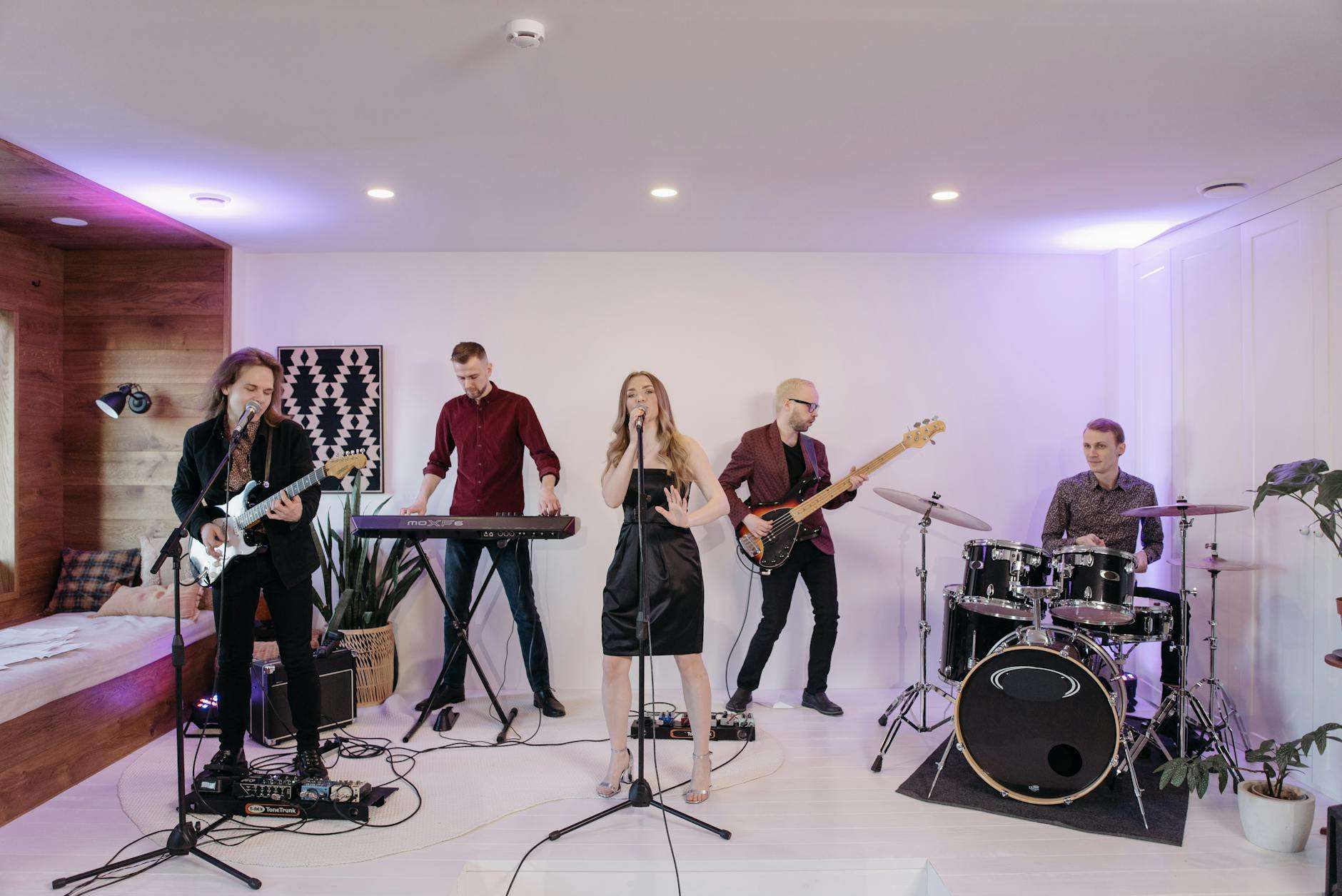Creating the perfect home music space involves more than just placing a few speakers and instruments in a room. It’s about designing an environment that enhances sound quality, provides comfort, and inspires creativity. Whether you’re a passionate musician, an avid listener, or a casual enthusiast, optimizing your home music space can elevate your experience. Here’s a comprehensive guide to achieving the ideal setup.
Choose the Right Space
Select a Suitable Room
Start by choosing a room that suits your needs. Ideally, you want a space that’s quiet, away from high-traffic areas, and has minimal outside noise interference. Rooms with soft furnishings, like carpets and curtains, are preferable as they help to absorb sound and reduce reflections.
Consider Room Shape and Size
Room shape and size play a critical role in sound quality. Rectangular rooms are generally better for acoustic treatment than square rooms. If possible, avoid rooms with parallel walls, as they can cause unwanted sound reflections. A space that’s too small or irregularly shaped might require additional acoustic treatment.
Acoustic Treatment
Treat the Room with Panels
Acoustic panels are essential for controlling sound reflections and improving audio clarity. Place panels on walls and ceilings to reduce echoes and standing waves. Focus on the first reflection points—areas where sound waves bounce off surfaces and reach your ears. Bass traps in corners can also help to manage low-frequency sounds and improve overall acoustics.
Use Diffusers
Diffusers scatter sound waves rather than absorbing them, creating a more balanced and natural sound. Place diffusers strategically around the room to ensure even sound distribution. They’re particularly useful for larger spaces or those with multiple sound sources.
Consider Flooring and Wall Treatments
Carpets and rugs can help to absorb sound and prevent excessive reverberation. If you have hardwood floors, adding a rug can make a significant difference. For walls, fabric or textured treatments can also aid in sound absorption.
Optimize Speaker Placement
Position Speakers Correctly
Speaker placement is crucial for achieving the best sound quality. Follow the equilateral triangle rule—place your speakers and listening position in a triangle where each side is equal in length. This setup ensures that sound reaches you evenly from both speakers.
Avoid Corners and Walls
Place speakers away from corners and walls to reduce bass buildup and prevent unwanted reflections. Ideally, speakers should be positioned at least a few feet from walls to ensure clear and balanced sound.
Use Stands or Mounts
Speaker stands or wall mounts can help to position your speakers at the optimal height and angle. Ensuring that the tweeters (high-frequency drivers) are at ear level when seated will enhance clarity and imaging.
Invest in High-Quality Equipment
Choose High-Quality Audio Gear
Investing in high-quality audio equipment, such as speakers, amplifiers, and audio interfaces, is crucial for a superior music experience. Look for gear that matches your needs and budget. High-quality equipment will provide better sound reproduction and durability.
Consider a Dedicated Audio Interface
For musicians or home recording enthusiasts, a dedicated audio interface is essential. It allows you to connect instruments and microphones to your computer, offering better sound quality and control compared to built-in sound cards.
Use a Good-Quality Music Source
The source of your music matters. Use high-resolution audio files or streaming services that offer high-quality streams. A good DAC (digital-to-analog converter) can also improve sound quality, especially if you’re using a computer as your primary music source.
Enhance Comfort and Aesthetics
Create a Comfortable Listening Area
Comfort is key in a music space. Invest in comfortable seating, such as ergonomic chairs or plush sofas, that allow you to relax while listening or playing music. Ensure that your space has adequate lighting and ventilation to create a pleasant environment. Furthermore, make sure you have the right fiber internet in East Hartford, CT to be able to stream music at the highest quality without interruptions to your connection.
Personalize Your Space
Personalize your music space with decor that reflects your style and interests. Add elements like posters, artwork, or memorabilia that inspire you. The right ambience can enhance your enjoyment and creativity.
Manage Ambient Noise
To ensure a quiet and focused environment, manage ambient noise. Consider adding white noise machines or soundproofing elements to block out external sounds. Curtains and door seals can also help to reduce noise intrusion.
Final Thoughts
Optimizing your home music space involves careful consideration of room selection, acoustic treatment, equipment placement, and personal comfort. By choosing the right room, investing in high-quality gear, and creating an aesthetically pleasing environment, you can enhance your music experience and foster creativity. Whether you’re enjoying your favorite tunes or recording your next masterpiece, a well-designed music space will provide the perfect backdrop for all your musical endeavors.



